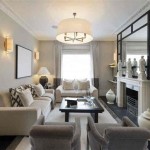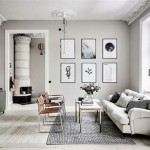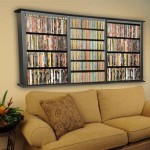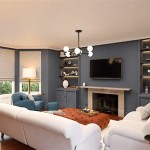The Art of Illumination: Selecting the Best Living Room Table Lamps
Living room table lamps are more than just light sources; they are integral components of a room's overall aesthetic and functionality. Selecting the right table lamp requires careful consideration of various factors, including style, size, light output, and intended use. A well-chosen table lamp can enhance the ambiance, provide task lighting, and contribute to the overall design scheme of a living room.
The market offers a vast array of table lamps, ranging from traditional designs to contemporary minimalist styles. Navigating this extensive selection necessitates a thorough understanding of the different types of lamps available, the functionalities they serve, and how they interact with the other elements within the living room space. This article provides a comprehensive guide to choosing the best living room table lamps, exploring key aspects to consider and offering practical advice to ensure a harmonious and well-lit living environment.
Understanding the Purpose of Table Lamps in the Living Room
Table lamps in the living room serve multiple purposes. Primarily, they provide supplemental lighting, filling in gaps in ambient light and creating a more inviting atmosphere. Strategically placed table lamps can soften harsh shadows and reduce glare, making the room feel cozier and more comfortable. They are often used to create a layered lighting scheme, combining ambient, task, and accent lighting to achieve a well-balanced and visually appealing space.
Beyond their functional role, table lamps act as decorative elements, contributing to the overall style and character of the living room. The design of a table lamp, including its shape, materials, and finish, can complement or contrast with existing furniture and décor. They can be used to introduce pops of color, textures, or patterns, enhancing the visual interest of the room. A carefully chosen table lamp can become a focal point, drawing the eye and adding a touch of sophistication.
Furthermore, table lamps can be strategically positioned to highlight specific areas or objects within the living room. A lamp placed on a side table next to a sofa can provide convenient task lighting for reading or other activities. A lamp positioned on a console table can illuminate artwork or decorative items, drawing attention to these elements and enhancing their visual impact. The versatility of table lamps makes them an indispensable tool for creating a functional and aesthetically pleasing living space.
Key Factors to Consider When Choosing a Table Lamp
Selecting the "best" table lamp is subjective and depends heavily on individual needs and preferences; however, several key factors should be considered to ensure a satisfactory outcome. These include the lamp's size and scale, the type of shade, the bulb type and wattage, the style and design, and the overall quality of construction.
Size and Scale: The size of the table lamp should be proportionate to the furniture it will be placed on. A small lamp on a large console table will look lost and insignificant, while a large lamp on a small side table might appear overwhelming. Consider the height of the lamp base and the diameter of the shade to ensure that it is appropriately scaled for the surface it will occupy. A general rule of thumb is that the bottom of the lampshade should be at eye level when seated to minimize glare.
Shade Type: The lampshade plays a crucial role in determining the quality and direction of light emitted by the lamp. Different shade materials and shapes will produce different effects. Fabric shades tend to diffuse light evenly, creating a soft and warm glow. Metal shades, on the other hand, direct light downwards, providing more focused task lighting. The shape of the shade can also influence the overall style of the lamp. Drum shades are contemporary and minimalist, while empire shades are more traditional and formal.
Bulb Type and Wattage: The type of bulb used in a table lamp will affect the color temperature and brightness of the light. Incandescent bulbs produce a warm, yellowish light, while LED bulbs offer a wider range of color temperatures, from warm white to cool white. The wattage of the bulb determines the brightness of the light. For general ambient lighting, a lower wattage bulb is sufficient, while task lighting may require a higher wattage bulb. LED bulbs are energy-efficient and long-lasting, making them a popular choice for table lamps.
Style and Design: The style and design of the table lamp should complement the overall décor of the living room. Consider the existing furniture, color scheme, and architectural style when choosing a lamp. Traditional living rooms may benefit from lamps with ornate bases and fabric shades, while contemporary living rooms may be better suited for lamps with clean lines and minimalist designs. The finish of the lamp base, such as metal, wood, or ceramic, should also be considered to ensure that it coordinates with the other elements in the room.
Quality of Construction: The quality of construction is an important factor to consider, as it will affect the durability and longevity of the table lamp. Look for lamps made from high-quality materials with sturdy bases and well-constructed shades. Check the wiring and electrical components to ensure that they are safe and reliable. A well-made table lamp will not only look good but will also last for many years.
Integrating Table Lamps into a Living Room Lighting Plan
Table lamps are most effective when integrated into a comprehensive lighting plan that addresses the different lighting needs of the living room. A well-designed lighting plan should include ambient lighting, task lighting, and accent lighting, each serving a specific purpose.
Ambient Lighting: Ambient lighting provides overall illumination for the room, creating a sense of warmth and comfort. Table lamps can contribute to ambient lighting by providing a soft, diffused glow. Place table lamps strategically around the room to fill in gaps in ambient light and create a more inviting atmosphere. Consider using lamps with dimmer switches to control the intensity of the light and adjust it to suit different activities.
Task Lighting: Task lighting provides focused illumination for specific activities, such as reading, writing, or crafting. Table lamps are ideal for providing task lighting in the living room. Place a lamp on a side table next to a sofa or armchair to provide convenient lighting for reading. A lamp on a desk or console table can provide illumination for writing or other tasks. Choose lamps with adjustable arms or shades to direct the light where it is needed most.
Accent Lighting: Accent lighting highlights specific features or objects in the living room, such as artwork, sculptures, or architectural details. Table lamps can be used to provide accent lighting by positioning them to illuminate these elements. Place a lamp on a console table to highlight a piece of artwork. A lamp on a shelf can illuminate decorative items. Use lamps with spotlights or adjustable shades to direct the light onto the desired object.
When integrating table lamps into a living room lighting plan, consider the placement and spacing of the lamps. Avoid placing lamps too close together, as this can create a cluttered and unbalanced look. Instead, distribute the lamps evenly around the room to create a sense of visual harmony. Use different sizes and styles of lamps to add visual interest and create a more dynamic lighting scheme.
The color temperature of the light emitted by the table lamps should also be considered. Warm white light is generally preferred for living rooms, as it creates a cozy and inviting atmosphere. Cool white light is better suited for task lighting, as it provides more focused illumination. Use consistent color temperatures for all of the lamps in the living room to create a cohesive and harmonious lighting scheme.
Finally, consider the use of smart lighting systems to control the table lamps. Smart bulbs and switches can be controlled remotely using a smartphone or voice assistant, allowing for convenient and customizable lighting options. Smart lighting systems can also be programmed to dim or turn on and off automatically, saving energy and enhancing security.
By carefully considering these factors and integrating table lamps into a comprehensive lighting plan, one can create a living room that is both functional and aesthetically pleasing. The right table lamps can transform a living room into a warm, inviting, and stylish space, enhancing the overall quality of life.

15 Living Room Table Lamps For 2024

The Best Living Room Lamps For A Cozy Classic Look Perfecting Places

Table Lamps

Emelda Cream Table Lamp

Traditional Tiffany Style Table Lamp 24 75 High Broe Tropical Birds Clear Multicolored Antique Stained Glass Shade Decor For Living Room Bedroom

Oneach Retro Table Lamps For Living Room Bedroom 18 5 Farmhouse Set Of 2 Nightstands Lamp Bedside Resin

The Best Table Lamps For Living Room 2025 Homary

50 Best Table Lamps 2024 Stylish Desk And Side Lighting

Kamas Table Lamp

How To Pick The Best Table Lamp For Your Living Room Light Sleepers








